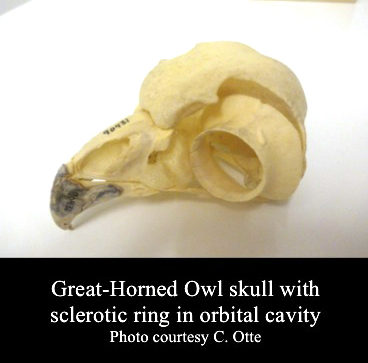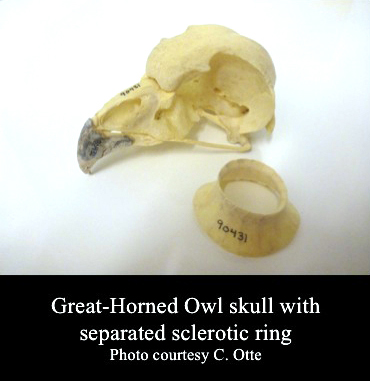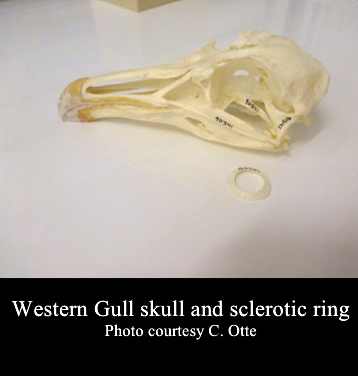This weekend I prepared a Barred Owl (Strix varia) for the Ornithology and Mammalogy collection and it got me thinking about sclerotic rings.

Sclerotic rings are a bony structure found surrounding the eyeball of many vertebrates, such as fish and birds. Since vision is so important to birds from finding food to watching for predators, or being able to judge distance for a smooth landing, having this bony ring keeps their vision as sharp as possible. The eye rings also hold the eyeball into place, preventing movement of the eye within the socket. We humans, as mammals, do not have sclerotic rings and it’s hard to imagine what it would be like. Luckily owls are known for the head turning abilities!

The shape and size of the eye ring can tell us more about what kind of lifestyle the bird had. For example, a flatter eye ring versus a tubular eye ring can tell us the time of day a bird may be most active. As a nocturnal animal, the Barred Owl’s sclerotic ring looks a bit different from that of most other birds. Their eyes are wide in diameter but also long and tubular to enhance the owl’s night vision. Having a larger corneal diameter allows more control over the amount of light reaching the retina. Other nocturnal owls such as the Great-Horned Owl (Bubo virginianus) have large tubular eye rings as well. Comparatively, this Western Gull (Larus occidentalis) has flatter sclerotic rings since they are active during the day.

At the Academy, we prepare the sclerotic rings along with any bird skeleton. Gathering additional data on avian behavior and skeletal structure enhances the knowledge that we can use to conserve these amazing birds!
Codie Otte
Curatorial Assistant and Specimen Preparator
Ornithology & Mammalogy Department